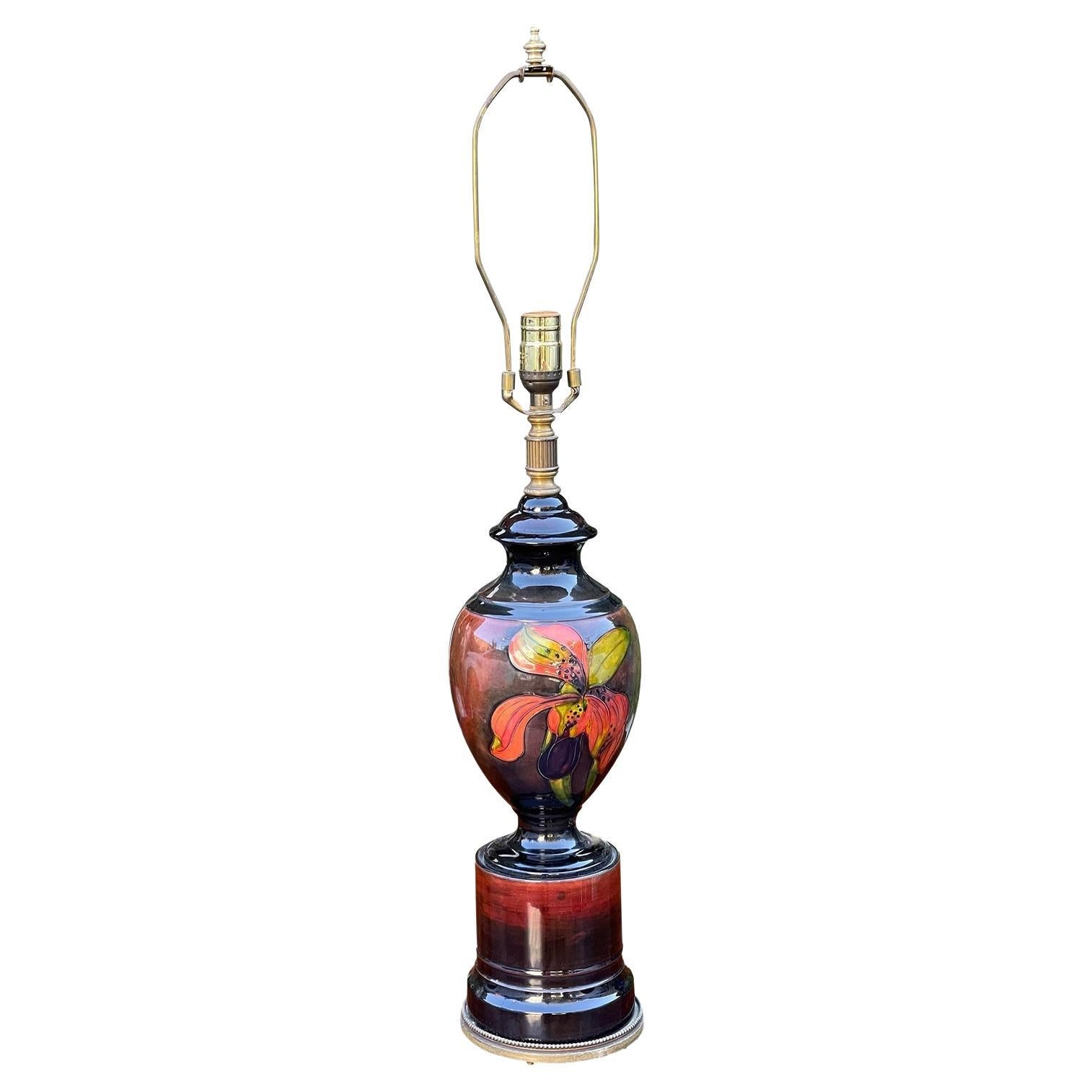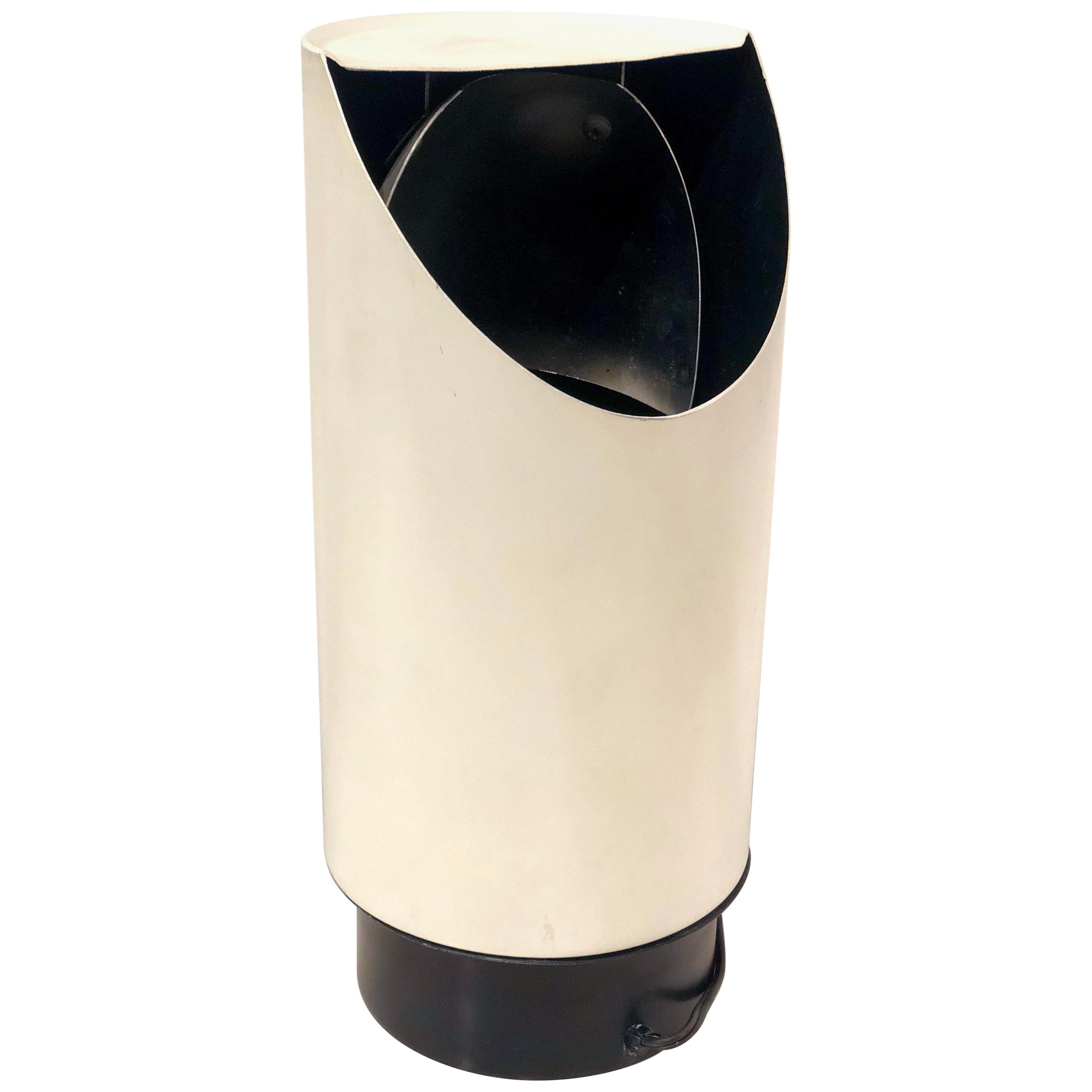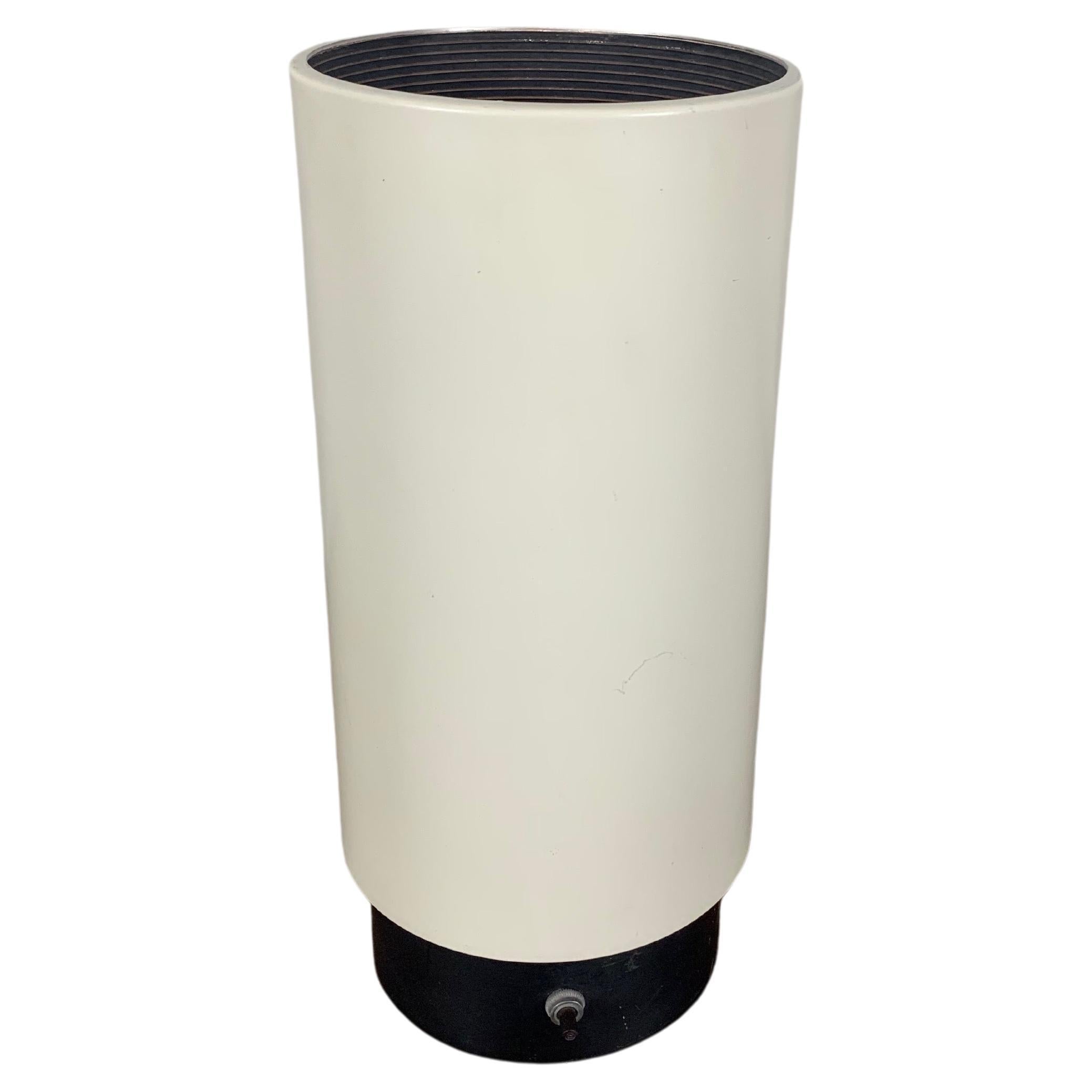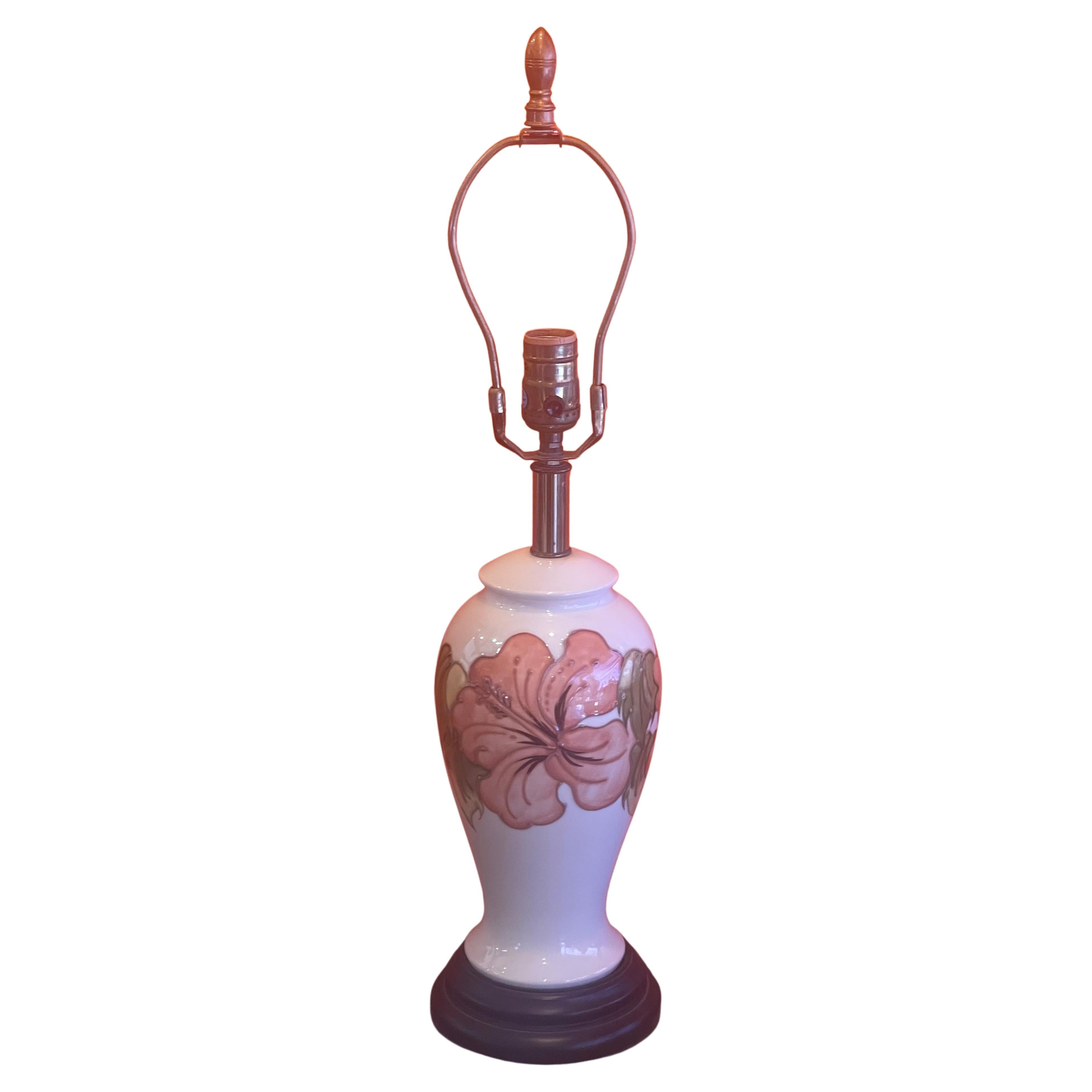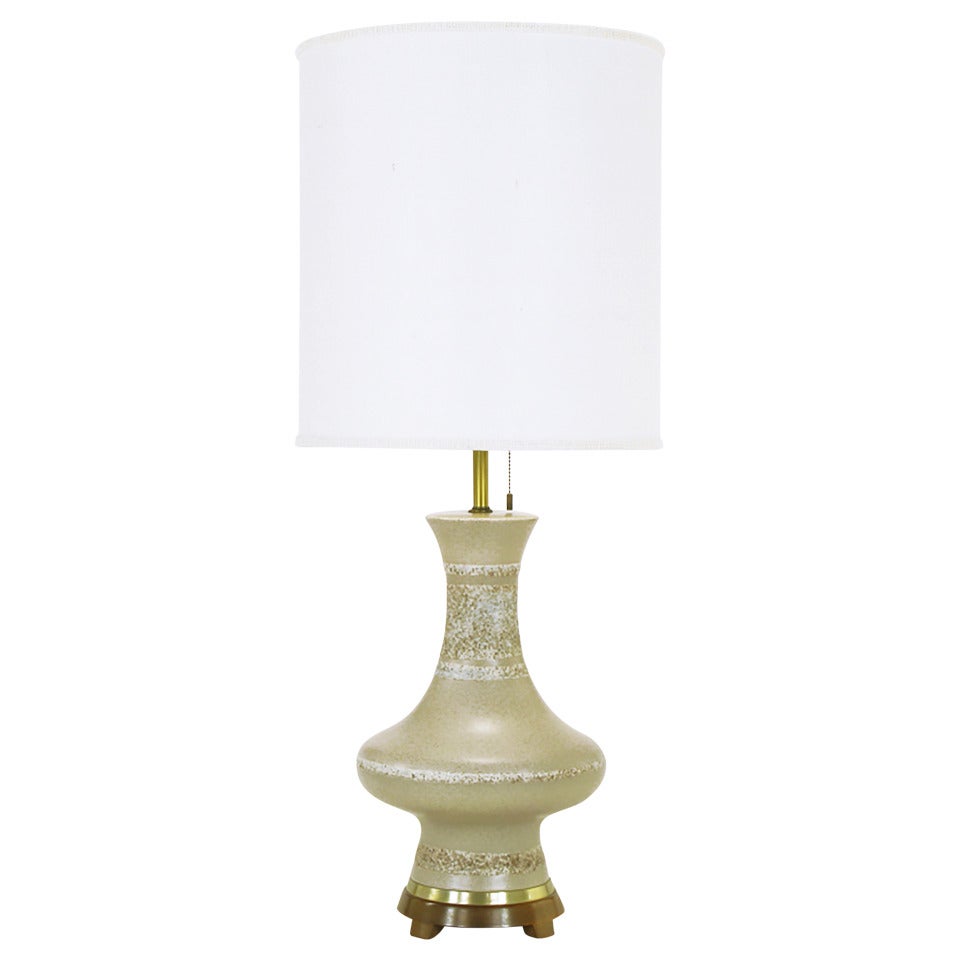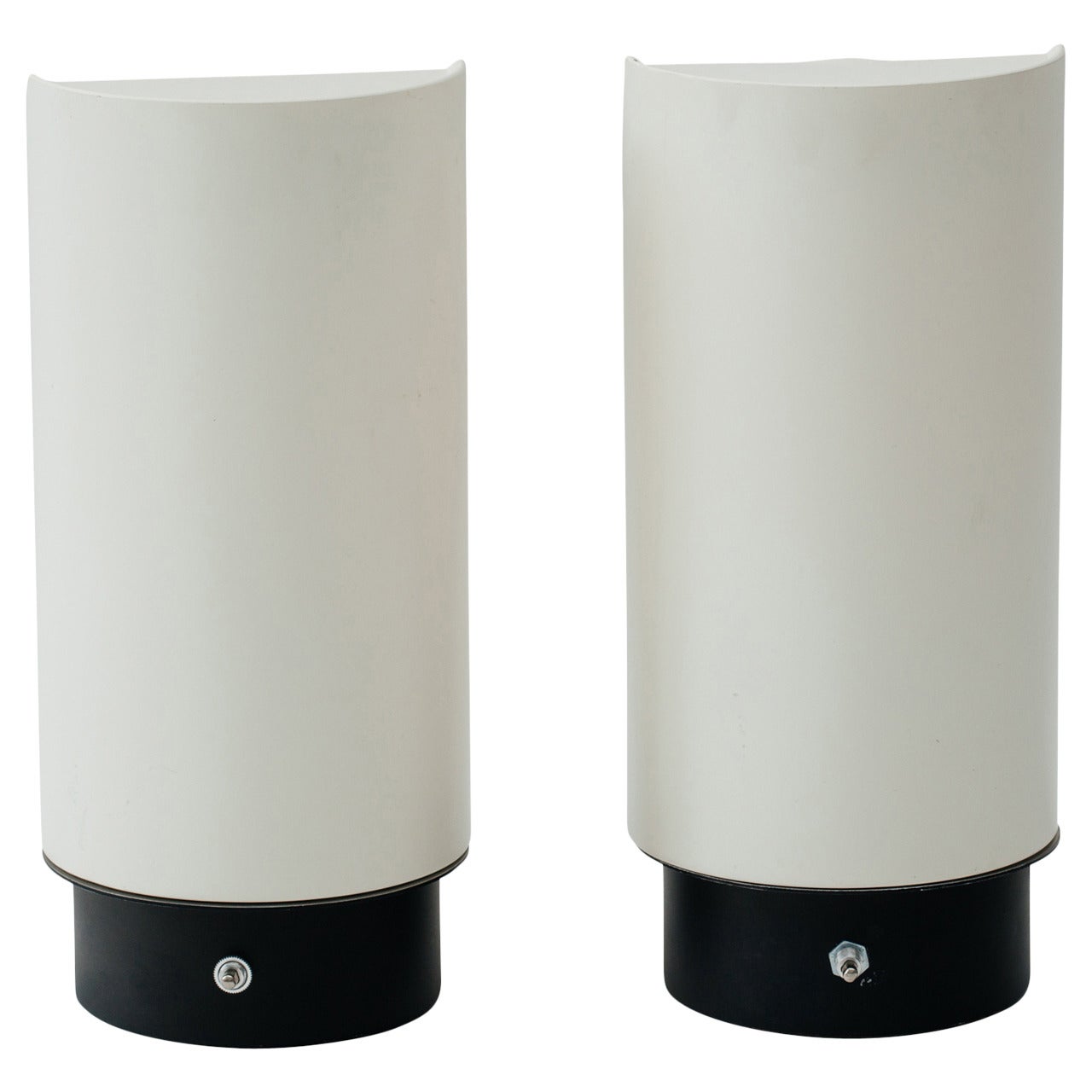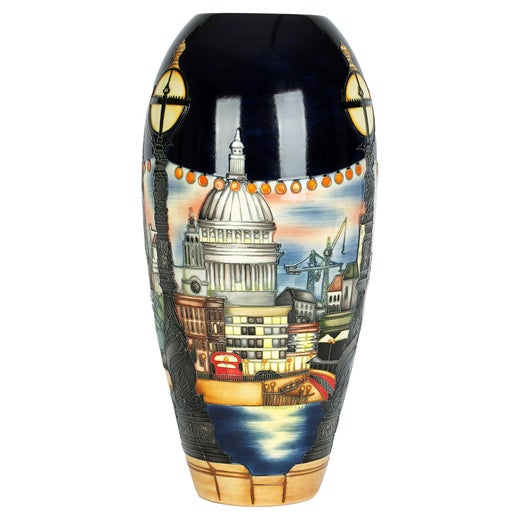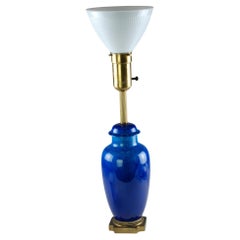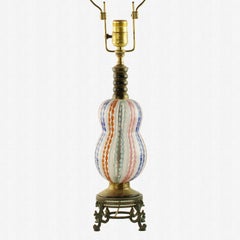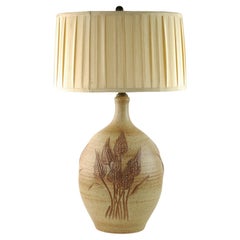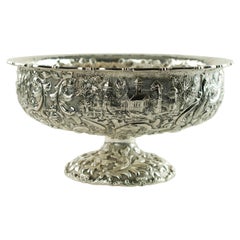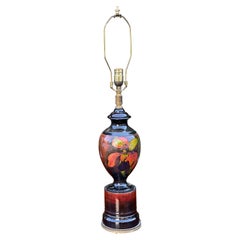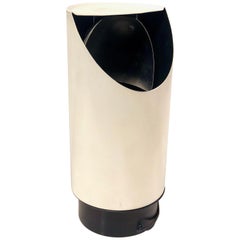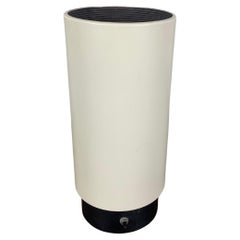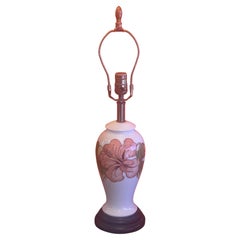Moorcroft Art Pottery 'Fuchsia' Footed Lamp with Lightolier Glass Reflector Bowl
About the Item
- Creator:Moorcroft Pottery (Manufacturer),Lightolier (Manufacturer)
- Dimensions:Height: 26.88 in (68.28 cm)Diameter: 6 in (15.24 cm)
- Style:Art Nouveau (In the Style Of)
- Materials and Techniques:
- Place of Origin:
- Period:
- Date of Manufacture:circa 1940s
- Condition:Wear consistent with age and use. Minor structural damages. Please note the Lightolier reflector bowl has a chip on the rim and the shade has some rips to the interior lining.
- Seller Location:Cincinnati, OH
- Reference Number:Seller: 1126026571stDibs: LU119121827852
Lightolier
Founded in 1904 in New York and family-operated through most of its history, Lightolier was one of the pioneering American electric lighting companies, best known for its embrace of stylistic and technical innovations.
Collectors focus on vintage Lightolier lighting fixtures produced from the 1950s and into the 1970s, when an in-house design team led by Gerald Thurston — and a stellar cast of international design contributors — created an array of practical yet aesthetically lively table lamps, floor lamps, sconces and chandeliers.
Amidst the post-World War II building boom, Lightolier — the name combines “light” and “chandelier” — aggressively boosted its residential lighting division. Thurston, who was strongly influenced by the sleek designs of Gino Sarfatti and his Italian lighting firm Arteluce, towards simpler lamp designs that offered flexibility of function. His best-known designs include the Cricket task light — a lamp with an adjustable enameled metal hood that toggles on a slender bent-metal base — and the three-legged Tripod floor lamp. At the same time, Thurston had a wonderful eye for talent and sought work from some of the lesser-known greats of the era, such as Paavo Tynell, the Finnish lighting designer, who designed several brass chandeliers for Lightolier with his trademark elegant flamboyance.
And more, Thurston recognized abilities in designers not known for their work in lighting.
Edward Wormley, head of furniture design for Dunbar, produced several noteworthy chandeliers employing canisters and reflective hoods. Alvin Lustig was famed as a graphic designer. His ca. 1953 Ring ceiling fixture for Lightolier had a minimalist techno look some 30 years ahead of its time. But this was par. Designed by Michael Lax in 1964, the Lytegem high-intensity lamp — included in the permanent collection of the Museum of Modern Art — features a ball-shaped shade attached with a chromed armature to a cubic base, a form that would be widely copied in the following decade. Chandeliers designed in the early 1970s by Gaetano Sciolari, with details such as acrylic diffusers and vertical, two-bulb arms, would define the look of lighting in their day.
A look through these pages reveals just how astonishingly wide a range of lighting pieces Lightolier produced. The company never flicked off its stylistic switch.
Find a collection of vintage Lightolier lamps and other lighting fixtures on 1stDibs.
Moorcroft Pottery
William Moorcroft (1872–1945), the founder of the celebrated British art-pottery company that shares his last name, was both an aesthete and a technical innovator. Along with William de Morgan, he is regarded as one of the greatest ceramists of the Arts and Crafts movement, yet Moorcroft’s singular style is heavily inflected with the lush naturalism of the Art Nouveau school of art and design.
The son of a decorative pottery painter, Moorcroft was born in Staffordshire, the center of English ceramics-making, studied at the Wedgwood Institute and in 1897 joined the local pottery manufacturer James Macintyre & Co. as a designer. After a year, he was put in charge of the company’s art-pottery studio, and there he developed a new style of wares named “Florian,” made with a technique called tube-lining, or slip-trailing. In this method, decorative motifs are outlined with a thin, raised border produced by piping a thread of clay onto the body of a vessel — much like squeezing toothpaste from a tube.
Moorcroft, who took the unusual step of signing his ceramics, would go on to win numerous international awards. In 1913, backed by the London department store Liberty & Co., he left Macintyre to open his own workshop. Queen Mary, wife of King George V, gave Moorcroft her Royal Warrant in 1928. Shortly before he died in 1945, his son, Walter Moorcroft (1917–2002), took over as head of the firm. The pottery company is still in business in Staffordshire, with a design department headed by Rachel Bishop.
William Moorcroft’s ceramics are noted for their colorful, ebullient (and often slightly surreal) decorations depicting stylized natural forms — flowers, toadstools, fruit (pomegranate is a favorite among collectors), insects and landscapes. Most Moorcroft wares are finished with a glossy overglaze. Blue-and-white and pastel shades were generally used as underglazes on early Moorcroft pieces, and he later developed a rich, ruddy background glaze he called “flambé.”
Moorcroft art pottery has a rich, warm and inviting look — a comforting aesthetic that explains their enduring appeal.
Find antique and vintage Moorcroft pottery, vases, serveware and more on 1stDibs.
- ShippingRetrieving quote...Shipping from: Cincinnati, OH
- Return Policy
More From This Seller
View AllVintage 1920s French Art Deco Table Lamps
Porcelain, Glass
Vintage 1950s Italian Hollywood Regency Table Lamps
Brass
1990s American Mid-Century Modern Table Lamps
Ceramic
Early 20th Century American Victorian Decorative Bowls
Sterling Silver
Early 20th Century American Other Centerpieces
Sterling Silver
Antique 1870s Great Britain (UK) Aesthetic Movement Pottery
Pottery
You May Also Like
20th Century Art Deco Table Lamps
Pottery
Late 20th Century American Mid-Century Modern Table Lamps
Metal
Mid-20th Century American Mid-Century Modern Table Lamps
Metal, Aluminum
Mid-20th Century American Mid-Century Modern Table Lamps
Metal
Vintage 1960s American Table Lamps
Metal, Brass
Mid-20th Century American Mid-Century Modern Table Lamps
Aluminum
